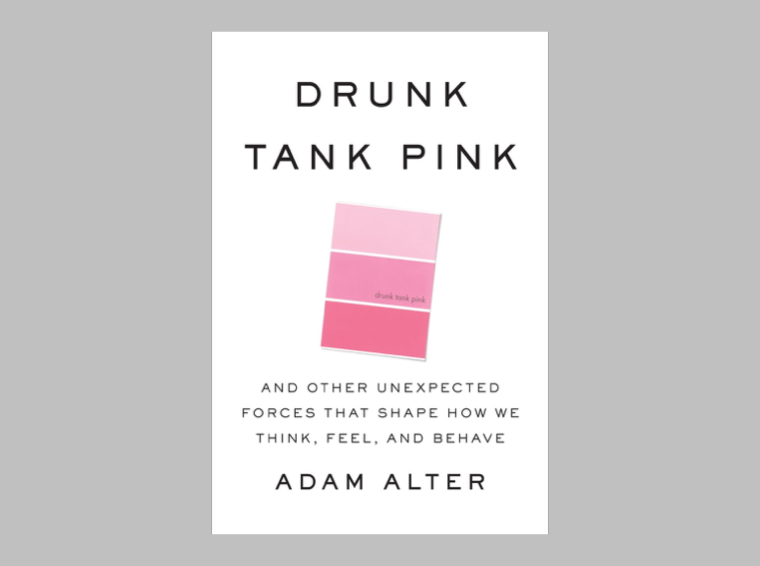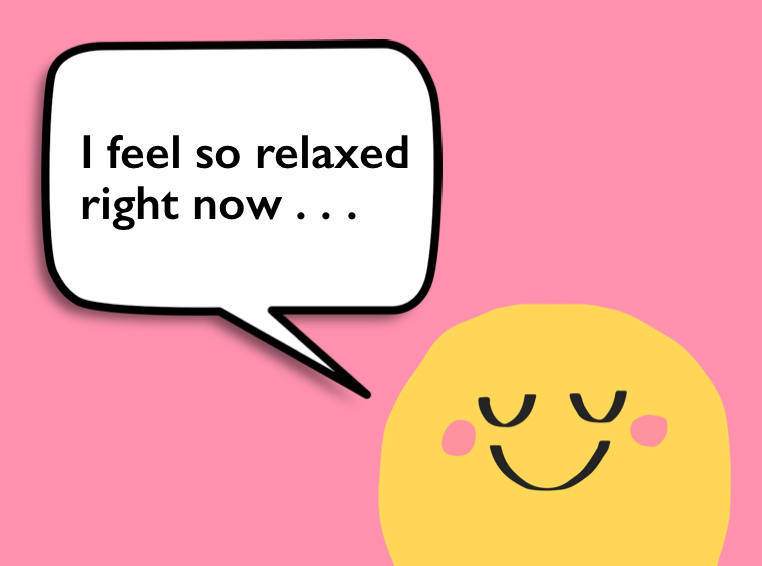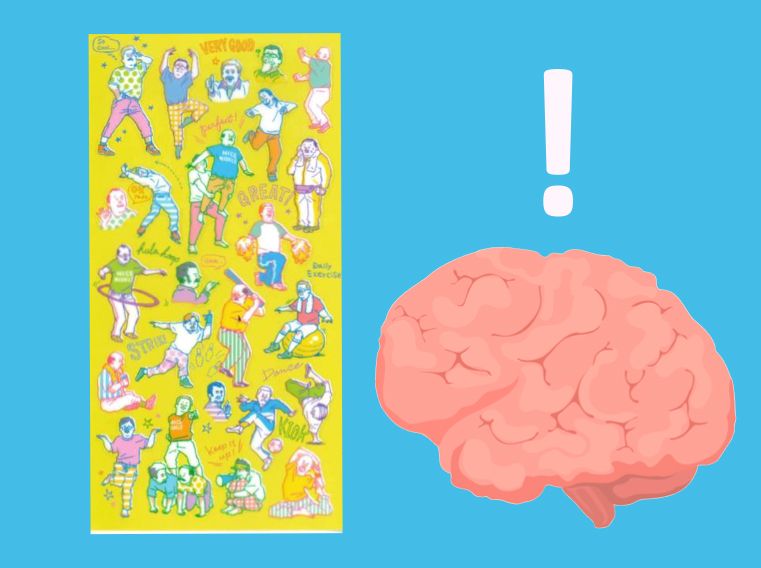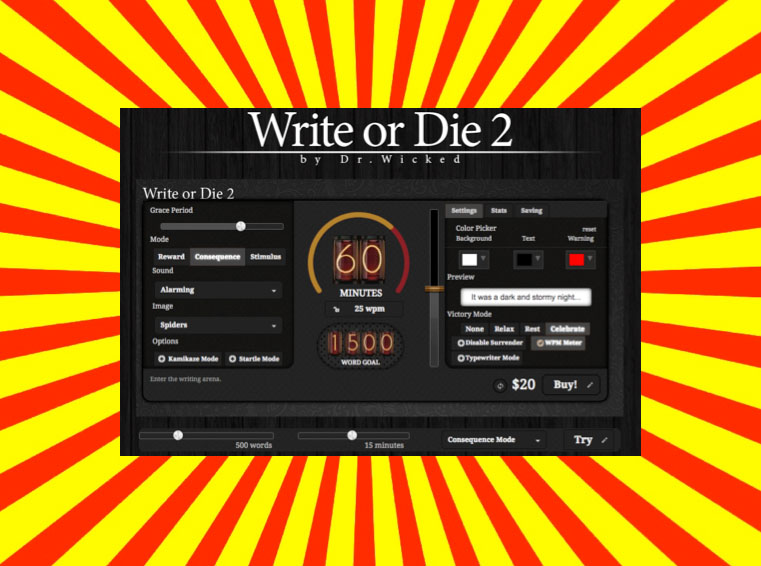Here’s a fact that may surprise you . . .
Take a moment to let that sink in.
Why is being socially isolated so damaging to our health?
It’s because we’re social creatures.
We’re biologically wired for connection. This is one of our core human needs. When we don’t feel connected, we don’t feel so good. We experience pain.
In fact, studies involving monkeys have found monkeys would rather go hungry than be alone. That’s how important connection is.
A few years ago, I moved temporarily to Japan. I lived in a place called The Washington Plaza hotel. Sounds fancy, right? It wasn’t.
It was the cheapest hotel in town. My room was tiny. The view was a concrete jungle. Breakfast was chemical sludge soup from a vending machine. But I wasn’t there for a fun holiday. I was there to visit a friend who was very ill.
Every morning, I would catch the bus to the hospital to see my dear friend. After a few hours, I would head back to my little hotel room, where I would sit and cry. It was hard to get up and leave that little room.
I started to understand how people lose their minds and deteriorate quickly when placed in solitary confinement.
So I forced myself to do little things like run up and down the hotel stairwell, ride the hotel bike, go out and buy a rice ball from the 7-Eleven, etc. Doing these things helped a lot but I won’t lie, it was still really tough.

I was with my family, friends and pets. I could see trees and hear bird song. I felt connected and fully alive. Instead of procrastinating, I just got on with things. I became a productivity powerhouse.
1) It keeps us sane and grounded; and
2) It’s the most effective pathway to happiness and productivity.
So the question is …
Let’s start with the obvious things you can do . . .
Then pull out your favourite board games and engage in some “supercharged socializing”. Cal Newport refers to this as a form of socialising that is characterised by excited chatter and loud belly laughs. Playing games is a great way to help you be present and connected to others.
Don’t have any board games? No problem!
There are many spoken games and paper and pen games (e.g. Mr Squiggle) you can play. I recommend checking out the book Parlour Games for Modern Families by Myfanwy Jones and Spiri Tsintziras. This book contains 130 games, which the authors tested and tweaked over a 6-month period with their families. What I love about these games is you don’t need to buy anything. And no tech devices are required, which brings me to my next point . . .
Unless it’s absolutely required, put your devices away (out of sight). Give the person your full attention. Psychotherapist Nancy Colier states in her book The Power of Off:
“Attention is how we show each other we matter . . . The gaze of someone who is really with us (not distracted) is a gift.”
Go play with your pets. Rub their bellies. Stroke their silky ears.
But it’s not just people and our pets who we need to connect with. It’s nature, too. So put on your shoes and head outside into your garden. If you need a bit of guidance in exploring the natural world, check out the guided exploration Making Moves by RZA on Spotify.
My next suggestion requires a bit of courage …
I know it feels much safer to send a text or an email. But this won’t cut it.
Professor Sherry Turkle, author of Alone Together: Why We Expect More from Technology and Less from Each Other, argues apps like Facebook and Instagram give us this illusion of connection and companionship.
Send a messages on one of these platforms? You’re being communicative. Being communicative is very different from feeling connected to another human being.
Our brains evolved over millions of years to crave rich social interactions. This need to connect can’t simply be met by receiving text messages and a few ‘likes’.
Research from the Center for Cognitive & Social Neuroscience (University of Chicago) has found that the more face-to-face interactions we have, the less lonely we are. The more online interaction we have, the more lonely we’re likely to feel.
So give your brain a treat. Pick up the phone. Phone a friend.
If you’re not used to having phone conversations, that’s okay. Just know that this is a skill and with a little practice, you can get a lot better at it.
Want to make the experience even richer for your brain?
People in Italy and other parts of the world that are currently in lockdown have been using these to host virtual dinner gatherings, craft sessions and dance parties.
If you find yourself working at home alone, consider joining a free virtual work session, such as Akimbo virtual coworking.
And finally, whatever activities you choose to engage in, do your best to follow this Zen Mantra:
“Sit Sit.
Walk Walk.
Don’t wobble.”
In other words, be fully present.
As the authors of one of my favourite books The Art of Frugal Hedonism suggest:
“Smack your lips and make appreciative noises when you’re eating something tasty…Stroke your dog’s ear between thumb and forefinger and marvel at its silkiness. Snuggle into your bed on a cold night and actually grin about how good it is … Go for a barefoot walk somewhere where you can curl your toes into brittle grass, mud or sand. Listen to music while doing nothing else at all. Call it mindfulness, call it living in the moment, call it relishing – it’s recommended by psychiatrists, hedonists, Buddhist monks and cheapskates alike.”
The pause button has been hit on life. Many of us have been given the precious gift of time. Let’s use it wisely. Let’s stop the multitasking madness. Let’s commit to being fully engaged in whatever we’re doing and whoever we’re with. Let’s make being present our top priority.
Share This:

This is no accident. This is a deliberate design decision.
It’s the same reason why fast food logos are often warm reds, yellows, and orange tones. These colours jump out at us. They create a sense of excitement and urgency.
In his book Drunk Tank Pink, Dr Adam Alter argues colour is a hidden force in our lives that can shape the way we think, feel, and behave.

In this blog, I’m going to explore how you can use colour as a tool to help you study more effectively and keep your brain focused and engaged on the task at hand.
There is whole field of research dedicated to exploring the impact of different colours.
One fascinating study looked at the impact of a particular tone of pink (Baker-Miller Pink/Drunk Tank Pink) that appeared to sap people of their energy. Researcher Dr Alexander Schauss found staring at this shade of pink could lower people’s heart rate and pulse compared to staring at other colours.
A 7-month trial was conducted in which prison confinement cells were painted in this pink shade. According to Dr Schauss, when people were exposed for just 15 minutes to this pink colour in their prison cell, it made them more relaxed, less aggressive, and reduced the incidence of violent behaviour.

But before you race off to the hardware store to buy a tin of pink paint, you need to understand a few simple things about the psychology of colour.
The research suggests that colour can act as a powerful trigger. It can cue different emotions, thoughts, and behaviours. For instance, when you see a red Stop Sign or light, this captures your attention.
But how we react to colour also comes down to personal preference and particular contexts. Colour can have different meanings in different contexts (e.g., on Valentine’s Day red generally symbolises romance rather than “Danger! Look out!”).
The bottom line is this: when it comes to colour you need to experiment to see what works for you.
Colour can evoke particular states (e.g., a state of calm or alertness). It can also perk up your brain and transform a dry, boring subject into something that’s a little bit more novel and interesting for your brain.
Below I share 9 ways you can use colour to study and work more effectively.
There’s something about a brightly coloured post-it note that captures our attention. This is why I love using post-it notes to help focus my mind and stay on track.
On a post-it note, I create a list of no more than three things that I need to do. Once I’ve completed those tasks, I scrunch up the post-it and throw it in the bin. This action feels surprisingly satisfying! I’ll then grab a fresh post-it note (often in a different colour) to create a new list.
If I’m not sure how to get started with a task (e.g., Task: Write blog post on colour), I’ll grab another post-it note and I’ll scribble down the first tiny action I can take to kick-start the process (e.g., Tiny action: Open Word document).
If you have trouble finding your study materials for each subject and they all look the same or are scattered all over the house, you can use colour to make it easier for you to find what you need.
Try assigning a particular colour to a subject. This makes it easier to stay organised and identify your materials. At home, I assign a light blue to my exercise files and folders. When it’s time to plan my workout for the day, I look for my light blue files and folders.
A simple and cheap way to colour code your materials without investing in brand new stationery is to gather a collection of paint swatches from your local hardware store. You can repurpose these as labels by cutting them into smaller sections and sticking them on your files, notebooks, etc.
Testing yourself with flashcards is a highly effective way to study for a test and/or exam. You can create your own flashcard decks by purchasing index cards in a range of different colours.
Try assigning certain colours to different subjects. Alternatively, you can simply pick a colour you want to work with depending on how you feel.
There are no hard and fast rules. Feel free to mix up your flashcard colours to keep things fresh for your brain.

Creating a mind map on a topic is a simple way to combat study fatigue and inject a little colour and creativity into your study sessions.
Although using different coloured pens isn’t absolutely essential for mind mapping, it’s well worth doing. I use different colours to create the different branches on my mind maps.
I have dozens of colourful mind maps at home. Despite my lack of drawing skills, these mind maps look great and are fun to review primarily due to the different coloured branches.
It’s important that you feel good in your study environment. If you feel good in your study space, you’re more likely to sit down and study there.
I’ve decorated my workspace by putting up colourful posters, inspiring and funny pictures, and artwork on my walls.
If you don’t have access to artwork/posters, you can print out colourful pictures and quotes of things that make you feel good. The addition of a few indoor plants can also help to liven up your space as well as purify the air.
Fluorescent highlighters feel really good to use. It can feel both fun and satisfying to strike things off your to-do list. You can also use these pens to time block different tasks/events in your diary and draw your attention to important tasks that you need to do.
Word of warning: When it comes to studying for a test or exam, I don’t recommend highlighting your books and/or notes as a way to learn. I know it feels good but research shows it’s an ineffective way to learn.

Red pen is often associated with failure and criticism. This is why seeing a teacher’s comments scribbled in red pen can trigger negative emotions in many of us.
Generally, we don’t like reading comments written by others in red pen. It feels nasty! But it turns out if you use a red pen to correct your own work, this can help you to pick up more errors.
Dr Adam Alter discusses one study that looked at the difference between using a blue pen and a red pen to correct an essay. Students who used a blue pen picked up on average 19 errors. In contrast, students using a red pen picked up an average of 24 errors.
But using a red pen has its limitations! If you are trying to solve a problem or taking a test, using a red pen can backfire by activating ‘avoidance motivation’. This is a distracting state of mind that can impair a student’s ability to solve problems and increase stress levels.
As a rule of thumb, use a blue or black pen when solving problems and taking tests. But when you need to cast a more critical eye on your work (e.g., in the proofreading phase), switch to using a red pen.
A lot of us use our phones as an easy way to escape from the boredom and discomfort we experience when doing our work. The apps on our phones are like candy. They are designed to be highly addictive and hijack our attention.
This is where you can be strategic with how you use colour: you can make your phone look more like a tool (and less like a toy) by turning on greyscale mode.
Viewing your phone in greyscale is a completely different experience to using it in full-colour mode. As a year 8 student recently shared with me:
“When I made my phone greyscale, it made it really boring to use.”
Try it and see for yourself!

This strategy may seem juvenile. If it reminds you of being back in primary school and receiving gold stars, hear me out.
Too often we don’t stop to acknowledge and appreciate ourselves for accomplishing tasks. We finish one thing and we immediately shift our focus to the next task on our to-do list.
When you work this way, your work routine can quickly become soul destroying and your motivation can take a dive.
This is why every so often I pull out my fun stamps and colourful sheets of stickers. After completing a task, I pause and acknowledge what I’ve done by giving myself a stamp or a fun sticker. It’s a little celebration.
For some reason, my brain responds particularly well to quirky Japanese stickers featuring ogisan (Japanese grandfathers) exercising. We’re all different, so explore what stamps and stickers work for you.
Colours are lot of fun! Incorporating a little more colour into your studies and work life can take things to the next level and perk up your brain when it needs a little motivational boost.
But the colours that I like may not be the colours that you like. Your colour preferences may also vary from day to day. Notice the colours that make you feel good and have fun seeing how you can incorporate them into your study sessions.
Then it’s time to make a few small tweaks to your lifestyle.
Below are 15 scientifically proven strategies that can help you change any behaviour.
Simple changes to your environment can help nudge you towards engaging in particular behaviours. For example, a year ago I set a goal to move more during the day. To achieve this goal, here’s how I modified my workspace:
• I removed my office chair
• I installed a standing desk
• I converted a treadmill to a treadmill desk and placed it in the centre of the room
• I set up a whiteboard to brainstorm on my feet
• I put a yoga mat on the floor and a set of dumbbells under my desk
These little changes forced me to work on my feet. Instead of sitting hunched in a chair, I now move constantly throughout the day.
Half the battle when it comes to adopting a new behaviour is remembering to do it. Enter cues!
Cues are things you see or hear that remind you to engage in a particular behaviour.
Here are some examples of cues:
• An alarm or timer going off
• A message to yourself written on a whiteboard
• An object placed in the middle of a room (e.g. an instrument that you need to practice or gym clothes set out)
• A note written on your hand
• A message on your screensaver
• An implementation intention
Implementation intentions are slightly more sophisticated cues. They involve making plans for when and where you’ll execute an intention (If I do X, then I will do Y).
Here are some examples of implementation intentions:
• “Today at 5pm, after work, I will go for a 20 minute walk.”
• “When I sit down on the bus, I will get out my flashcards and do 5 minutes of revision.”
• “I will meditate for 10 minutes at 7am in my bedroom.”
When a certain situation arises (e.g. you finish work or get on the bus), then you will carry out a particular behaviour (e.g. walk for 20 minutes or revise flashcards). The more you follow through with these plans, the sooner the behaviour will become a habit.
The more times you repeat a behaviour, the more deeply engrained it becomes in your brain. Once a behaviour becomes an engrained habit, it requires very little mental effort to execute.
As Dr Sean Young states in his book Stick with it:
“Brains are like cars. Driving them in manual mode takes a lot of awareness and effort. But brains prefer to be in automatic mode. They do this by storing things that frequently occur so they can be easily accessed. Think of it like your brain storing your username and password for a site you visit often. That way you can login effortlessly, without even thinking, allowing you to concentrate on other things.”
To get to automatic mode, you need to engage in the behaviour over and over again. Early and often is key!
We all have dreams. But often our dreams are so big and overwhelming we fail to do anything to move towards them. So break your dream down into small steps.
Ask yourself:
• What do I need to do today?
• What do I need to do in the next 10 minutes?
• What do I need to do in the next 30 seconds?
Let’s say you have a dream of improving your fitness and wellbeing. Today you’ll need to do some exercise to achieve this goal. The problem is your brain says, “Ugh…exercise .. don’t want to!”. So what do you do?
You could say, “All I need to do is go to the gym and touch the floor”. Of course, once you get to the gym, walk in and touch the floor, you’re there. You might as well keep going.
Mindfulness is about being aware of what’s going on in the present moment (i.e. your thoughts, sensations, feelings and surroundings). If you’re aware that you’re engaging in a bad habit, then you’re in a better position to stop and do something different. In short, you can better self regulate.
How do you become more mindful?
One way is to practise meditation. You can read more about this technique here.
As humans, we are wired to do what’s easy and most convenient. As psychologist Sean Young states:
“People want things to be easy for them to do. They enjoy things that are easy for them to do. And they’ll keep doing things that are easy to do.”
So how do you make a behaviour easy or easier to do?
Here are a few ideas:
• Break it down with a simple plan: list out all the small steps you need to take.
• Re-engineer your environment: decrease the barriers to engagement.
• Make it a habit: repeat the new behaviour over and over again (implementation intentions can help with this).
At the end of the day, week and month, do a quick check in. Ask yourself:
• How did I go today with what I set out to do?
• If things didn’t go to plan, what got in the way?
• What could I do differently tomorrow?
Pausing to reflect for a few minutes is time well spent. It allows you to consider better ways of doing things, so you can course correct and make continual improvements.
Motivational speaker Jim Rohn states:
“You are the average of the five people you spend the most time with.”
In other words, you soak up your friends’ qualities.
Have friends who exercise and eat well? You’re more likely to exercise and eat well. Have friends who take their studies seriously? You’re more likely to take your studies seriously.
If you’re trying to change a particular behaviour, see if there is a community you can join that can support you. Connect with other people who have changed or are trying to change their behaviour. There’s a real sense of comradery when you spend time with other people who are all working towards the same goals as you.
If you’re engaging in the same behaviour day in, day out, at some point your brain will get bored. So we need to explore ways to make the behaviour a bit novel and interesting for our brains. We need to apply Fun theory.
Here are some ideas of how you can perk up your brain:
• Change your environment
• Mix up the order of your routine
• Make it social in some way
• Have some music playing in the background
• Use rewards
One study found people who practised gratitude on a regular basis experienced better psychological wellbeing, a more positive outlook on the future, better sleep and engaged in more physical exercise.
When you feel good and you’re in a good headspace, it’s much easier to make changes in your life. For ideas on how to practise gratitude, click here.
Sometimes we spend too much time in our heads, trying to change our thinking to change our behaviour. But there’s an easier way.
You can create lasting behaviour change by engaging in small behaviours that trick your brain into viewing yourself in a new way.
For instance, instead of thinking about putting on your running shoes, force yourself to put your running shoes on at a certain time each day and go for a short walk. Keep doing this everyday for a few weeks. What will happen is your self image will begin to shift. You’ll start to see yourself as someone who exercises on a regular basis.
When you engage in a new behaviour, take note. Give yourself a gold star, a tick on a whiteboard, record it in an app or in a notebook, etc. This may seem a little childish or pedantic but it allows your brain to see that your making progress. It’s highly motivating for your brain. You’ll want to keep going.
Visualising the perfect life is a strategy that feels nice but research shows it doesn’t work. In contrast, sitting down and imagining all the possible things that could go wrong on your change journey is much more effective. Why?
When you imagine all the things that could go wrong, your brain starts to think and plan about what it can do to avoid these things from occurring.
Rewards can motivate you do things you really don’t want to do. Think about it, lots of people go to jobs they hate with a passion for the reward of money. Rewards work.
But you need to find what rewards and incentives will work for you. When it comes to studying for a test or exam, you could reward yourself in the following simple ways:
• Have a snack
• Do something fun
• Watch a funny video
• Play with your dog
The thing about rewards is they have to come after you’ve done the thing you need to do, not before. Pre-rewards don’t work.
It’s also important to make sure the reward is in alignment with your goals. If you’re trying to be healthier and lose weight, don’t make your reward a block of chocolate or a bucket of deep fried chicken.
So now it’s over to you. What change do you want to make?
Pick a behaviour and one or two of the strategies listed above. Have a play. See how many of these easily actionable tweaks you can incorporate into your daily routine.
And just remember, all behaviour change begins with committing to take the next step. So what’s your next small step?
They throw themselves into playing with blocks, singing songs, drawing with crayons, and creating art.
But as we get older, many of us lose our love of learning.
Learning at high school and university can become all about …
• Copying things from the whiteboard, PowerPoint slides or your textbooks
• Reading your notes over and over again
• Re-writing your notes
• Staying up late to study for tests and exams
• Highlighting huge slabs of text
When you feel forced to study something you don’t care about it can kill your love for learning. Studying takes on a torturous quality.
And when this happens, it’s easy to forget that you love to learn.
But it doesn’t have to be this way.
With a little creativity and a few simple tools, you can have a lot more fun with your studies.

Fun theory is this idea that if you want to engage in a particular behaviour (e.g. study) then you need to make the behaviour fun and novel for your brain.
For starters, let’s not call it geography. Let’s reframe it to learning about the world (i.e. your home).
Next step: get your hands on the largest world map you can find. Choose the map with the brightest colours (your brain loves bright colours). Now stick it to your wall.

Every time you meet someone new from another country, make it a fun game to find where he or she live on the map. Want to get a really good sense of where they live? Jump on Google maps and look at the street view.
Other strategies to try:
• Get a sense of how people live in this part of the world by visiting Dollar Street (this brings it to life)
• Jump online and find an online paper created in that part of the world. For example, learning about India? Check out The Times of India. This will give you a sense of the issues the local people are dealing with.

Need to bash out a 1,000 word essay in a short period of time? Then try using the Write or Die app.
The Write or Die app is a writing tool that helps you get words down fast. Here’s how it works: you set goals for how many words and the length of your writing session. Then you select either reward or consequence.
If you select reward, every time you hit a writing milestone a picture of a cute puppy will flash on the screen. Consequence mode will punish you with a red flashing screen and sirens if you’re writing too slowly. If you don’t pick up the pace, the computer will start eating up your words!
Other ways to make writing essays fun for your brain:
• Use different coloured pens and paper
• Select a crazy font on your computer
• Storyboard your essay: create a plan of your essay in picture form
• Dress up in a crazy costume or wear some ridiculous over-the-top item as you write (e.g. a feather boa or a crown).
• Give yourself a sticker every time you hit a writing milestone

Reading language textbooks can feel like a hard slog. To lighten things up for your brain, you could try:
• Using the Duolingo app
• Use a verb wheel (it feels a bit like being on the show Wheel of Fortune)
• Get out children’s language books from the library
• Go to a restaurant where the staff speak the language and practice your language skills on them
• Create a kids book in the foreign language
• Watch videos and movies in the language
The thought of having to memorise lines for a performance or speech can be overwhelming for your brain. Try doing the following:
• Use the Line Learner app
• Practice your lines in different accents
• Dress up and get fully into character
• Say your lines in an overly dramatic way
• Stand in front of the mirror and practice with yourself
• Drop your lines randomly into conversation with your friends
• Practice with your friends
• Sing your lines
The key here is to trick your brain into thinking it’s not studying for a test or exam. The best way to do this is to create a party atmosphere.
Here’s what I suggest:
1. Invite your friends over to study for a particular subject or topic.
2. Prepare a couple of platters of healthy snacks (e.g. fresh fruit and veggies sticks and dip), get some ingredients to make smoothies, put some background music on (nothing too distracting) and decorate the place with post-it notes, coloured pens and lined paper.
3. When your friends arrive, spend the first 10 minutes catching up (set a timer for this).
4. After socialising, set a timer for 25 minutes. Remove all phones from the space. It’s time to hit your books and/or flashcards.
5. When the timer goes off, everyone gets up and moves for 5 minutes (e.g. do a dance, go for a walk or do some karate kicks).
6. Rinse and repeat steps 4 and 5 until you feel like you need a longer break.
Not keen on throwing a study party? Fair enough. Try these ideas instead:

• Jump on Ducksters for simple and straightforward explanations
• Explore ideas in children’s books or any book that makes the topic seem fun for your brain (tip: pictures, illustrations and bright colours help).
• Get a whiteboard and some coloured pens and draw out everything you can remember about the topic. Do this for 5 minutes or until you exhaust your memory. Make sure you then check for gaps in your knowledge and things you incorrectly recalled.
• Venture outside into nature with your textbook, notes and/or flashcards.
Studying doesn’t have to feel like a chore. With a few tricks, you can fool your brain into thinking fun times are ahead! And the thing is when you’re having fun and you’re feeling good, you will learn more. It’s a win-win situation!
The key is to experiment and see what works for you. Keep things new and fresh because your brain loves anything that is new and novel.
Have any other ideas on how to make studying fun and novel for your brain? Feel free to post them below!
Dr Jane Genovese delivers interactive sessions on learning to learn, combating procrastination, exam preparation, how to focus in the age of distraction, habit formation and much, much more!
Get FREE study and life strategies by signing up to our newsletter:
© 2024 Learning Fundamentals